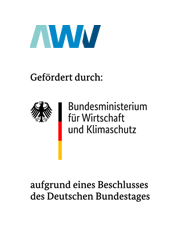How was the idea of e-Residency created?
This idea had been flowing around for quite some time. The core idea was that we should just extend our digital identity to all the partners we already have, so for all the professional or foreign investors, you name it, who do not want necessarily to become residents physically. So they will have an easy time handling their things, and especially entrepreneurs and investors for the companies. For example, you can be on the board of a company and you can never put your foot on Estonian soil. But then, once we decided to establish e-Residency, we discovered we could think about this much wider, so that it could really be not just about existing partners, but that e-Residency really could attract people to use the services here, so that we even could have a global reach.
What else do you see – what are the main effects of e-Residency? Is there a growth in companies or are there new services around new companies?
We are at the very beginning but what we already see is that they create jobs and pay taxes. I can tell you some figures: At the moment there are 15,000 e-Residents who have founded already 1,000 new companies in Estonia, that is a 1/15 ratio right now. An average new e-Resident company pays about 165 Euros of tax each month. In addition, they buy an average 85 Euros of services – banking, virtual office provider, some things like that. So that comes down to 250 Euros a month which means about 3 million Euros a year for 1,000 companies. This is three times what we directly invested in the program. Even I am surprised that we have got this super financial impact that early.
Do you have you some sort of scaling system or plan how e-Residency should develop in the next couple of years?
Well, we once jokingly said to have 10 million e-Residents in 10 years. We always have been trying to build the e-Residency a bit like start-up. We now see that the core product is ready and so we bring it to the market.
Scaling means two things. First of all, we really work to make the private sector providers to bring more and more services for e-Residents, be they Estonian or be they foreign. We also look for some global digital service providers. And secondly, the key factor, the critical factor, is to increase the issuing of e-Residencies. So far, you can only get them in our embassies and consulate, but these are only represented in a limited number of countries around the world. So we now are checking if there could be another model how to really reach everyone in the world, in all the countries or the major hotspots, not just the capitals. And then the numbers of e-Residents could develop much faster.
That means, e-Residency handed out by private providers, too?
Possibly. This has not been decided yet, but the model would be how you get visa. You basically have two sorts of visa arrangements. Either you go to an embassy or you go to a visa centre, which is a private company.

